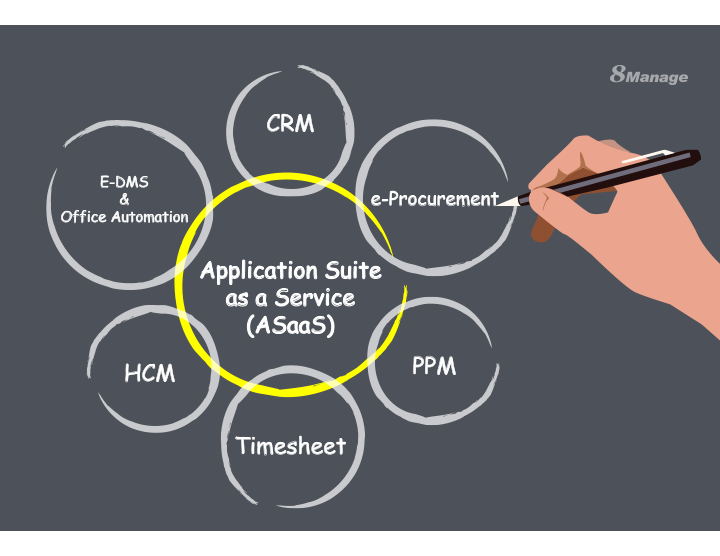Why SMBs should move to Application Suite as a Service
Organizations often focus on management systems individually(NOT Full Automation ), often in silos and sometimes even in conflict. Business information is doubling every 2 years and fragmented information increases risk and is expensive to manage.As the article “Reduce SaaS App Fragmentation for Workforce Efficiency” published by Information Week on October 3, 2017 said below:
“The proliferation of SaaS tools has made businesses more efficient in the last decade. However, many companies have reached a point of diminishing returns, when having too many solutions deployed in an organization results in workflow fragmentation, causing workers to spend as much time hunting for and aggregating information as they spend on their actual work.
Think about this: An average enterprise may use over 900 cloud applications to manage their processes, and 59% of workers say the number of tools they use to work has increased in the past year. The result is that the information needed to complete work is fragmented across multiple systems, instead of being stored in a single place.
Technology loses its value when it creates work and waste in the form of time searching for information, toggling between applications and copying information across tools. On the contrary, in the age of SaaS, applications should be -- and can be -- a backbone to worker productivity and efficiency. This is why it’s so important for IT to step in and smooth out the integration process to alleviate fragmentation within the ecosystems they facilitate. “

8Manage Full Automation-Application Suite as a Service (ASaaS)
In today’s market, Software as a Service (SaaS) are provided by over 10,000 vendors and they are highly fragmented, in the sense that they modeled even the same business objects differently and used different programming languages, technology stacks and run-time structures and using a number of SaaS together will result in high function and data fragmentations. The high cost caused by SaaS fragmentations isn’t fine even with large corporations, but they get used to the high cost of on-premises applications.
The high cost of SaaS fragmentations is certainly not fine with Small to Medium-sized Businesses (SMBs) since most of them only started using more enterprise applications because of the lower upfront cost and lower demand of in-house resources and expertise promised by SaaS vendors. If they need to start spending money on expensive Enterprise Application Integration (EAI) services and need a sophisticated IT team to manage the development efforts and run-time complexity of EAI, then it will be questionable whether it is affordable to them.
The Full Automation consists of all modules that were mentioned previously and its price is only 2 to 2.5 times the price of a single module SaaS. The best part is that all these SaaS modules were designed together as integrated enterprise applications, based on the same programming language and the same database schema, and will share the same database, run-time structure and system resources. In other words, these SaaS modules are highly efficient with low costs since they avoid the accidental (non-essential) complexity upfront.
8Manage is a single full automation system that provides the above different modules, when a project deliverable is late, the penalty will be automatically reflected in the Profit & Loss of the associated contract according to the SLA and of course the appropriate alert message will be sent out to the relevant people. Similarly, the approved change of a sales order will automatically trigger updates in R&D, supply-chain and production plans and financial forecasts.
After applications are modeled and developed, no matter what you do afterwards, it will be extremely expensive to get them integrated (non-fragmented). For SMBs, they should avoid the high cost of fragmentations as much as possible.







